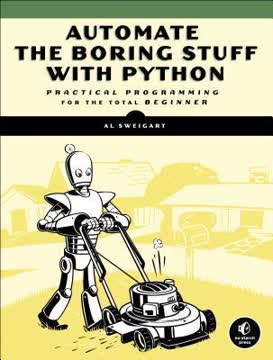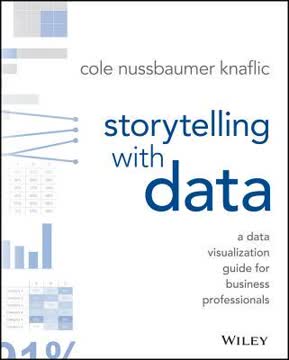Key Takeaways
1. SQL fundamentals: Tables, queries, and data manipulation
A database is nothing more than a set of related information.
Tables form the foundation. In relational databases, data is organized into tables consisting of rows and columns. Each table represents an entity (e.g., customers, orders) with columns defining attributes and rows containing individual records.
CRUD operations. SQL provides four basic operations for interacting with data:
- CREATE: Insert new records into tables
- READ: Retrieve data using SELECT statements
- UPDATE: Modify existing records
- DELETE: Remove records from tables
Query structure. A typical SQL query includes:
- SELECT: Specifies which columns to retrieve
- FROM: Identifies the source table(s)
- WHERE: Filters rows based on conditions
- ORDER BY: Sorts the result set
2. Joining tables: Unlocking relationships in relational databases
The role of indexes is to facilitate the retrieval of a subset of a table's rows and columns without the need to inspect every row in the table.
Types of joins. SQL offers several ways to combine data from multiple tables:
- INNER JOIN: Returns only matching rows from both tables
- LEFT/RIGHT OUTER JOIN: Includes all rows from one table, even without matches
- FULL OUTER JOIN: Includes all rows from both tables
- CROSS JOIN: Generates all possible combinations (Cartesian product)
Join conditions. The ON clause specifies how tables are related, typically using primary and foreign key relationships. For example:
sql
SELECT customers.name, orders.order_date
FROM customers
INNER JOIN orders ON customers.id = orders.customer_id
Multiple table joins. Complex queries often involve joining three or more tables to gather related information from across the database schema.
3. Filtering and grouping data: Refining query results
A where clause may contain one or more conditions, separated by the operators and and or.
WHERE clause power. Filtering allows you to retrieve only the data you need:
- Comparison operators: =, <>, <, >, BETWEEN, IN, LIKE
- Logical operators: AND, OR, NOT
- Pattern matching: Using wildcards (% and _) with LIKE
Aggregate functions. SQL provides functions to summarize data:
- COUNT(): Number of rows
- SUM(): Total of numeric values
- AVG(): Average of numeric values
- MIN()/MAX(): Smallest/largest values
GROUP BY and HAVING. These clauses enable analysis of data subsets:
- GROUP BY: Organizes rows into groups based on column values
- HAVING: Filters groups (similar to WHERE, but for grouped data)
4. Subqueries: Nested power for complex data retrieval
A subquery is a query contained within another SQL statement (which I refer to as the containing statement for the rest of this discussion).
Types of subqueries:
- Scalar: Returns a single value
- Column: Returns a single column of multiple rows
- Row: Returns a single row of multiple columns
- Table: Returns multiple columns and rows
Subquery locations:
- SELECT: For calculated columns
- FROM: As derived tables
- WHERE: For dynamic filtering
- HAVING: For filtering grouped results
Correlated subqueries. These reference columns from the outer query, allowing row-by-row processing. While powerful, they can impact performance on large datasets.
5. Advanced SQL: Views, transactions, and metadata
Views are created for various reasons, including to hide columns from users and to simplify complex database designs.
Views. Virtual tables based on SELECT statements:
- Simplify complex queries
- Provide data security by restricting access
- Present consistent interfaces as schemas evolve
Transactions. Ensure data integrity for multi-step operations:
- BEGIN: Starts a transaction
- COMMIT: Saves changes permanently
- ROLLBACK: Undoes changes if an error occurs
Metadata. Information about the database structure:
- Data dictionary: Stores definitions of database objects
- Information schema: Standardized way to access metadata
- System catalogs: Database-specific metadata tables
6. Indexing and constraints: Optimizing database performance
Indexes are the mechanism the database server uses to control simultaneous use of data resources.
Indexes. Improve query performance:
- B-tree: Balanced tree structure, good for most data types
- Bitmap: Efficient for columns with low cardinality
- Full-text: Optimized for searching text documents
Constraints. Enforce data integrity rules:
- Primary Key: Ensures unique identification of rows
- Foreign Key: Maintains referential integrity between tables
- Unique: Prevents duplicate values in a column
- Check: Enforces specific conditions on column values
Query optimization. Techniques to improve performance:
- Analyze execution plans
- Use appropriate indexes
- Avoid full table scans when possible
- Optimize JOIN operations
7. Analytics with SQL: Window functions for data insights
Using analytic functions, you can do all of these things and more.
Window functions. Perform calculations across sets of rows:
- OVER clause: Defines the window of rows to operate on
- PARTITION BY: Groups rows for analysis
- ORDER BY: Determines the sequence of rows within partitions
Ranking functions:
- ROW_NUMBER(): Assigns unique numbers to rows
- RANK(): Assigns rankings with gaps for ties
- DENSE_RANK(): Assigns rankings without gaps
Aggregate window functions:
- SUM(), AVG(), COUNT() over windows
- Running totals and moving averages
Offset functions:
- LAG(): Access data from previous rows
- LEAD(): Access data from following rows
Last updated:
FAQ
1. What is "Learning SQL" by Alan Beaulieu about?
- Comprehensive SQL introduction: "Learning SQL" by Alan Beaulieu is a practical guide to understanding and using SQL for generating, manipulating, and retrieving data from relational databases.
- Focus on programming features: The book emphasizes SQL data statements (SELECT, INSERT, UPDATE, DELETE) and programming features over just schema creation.
- Relational database fundamentals: It introduces key concepts like normalization, keys, joins, and the history of relational databases to provide a strong foundation.
- Portable, real-world examples: Examples use the Sakila sample database and MySQL, but the SQL taught is applicable across major database systems like Oracle, SQL Server, and DB2.
2. Why should I read "Learning SQL" by Alan Beaulieu?
- Build a solid SQL foundation: The book is suitable for beginners and intermediate users, starting with essential concepts and progressing to advanced topics.
- Practical, real-world techniques: It emphasizes hands-on usage of SQL features, ensuring readers can write efficient and maintainable queries for real applications.
- Prepare for modern data challenges: Coverage includes working with large databases, partitioning, and integrating SQL with big data tools, making it relevant for evolving data environments.
- Understand data structures: Learning SQL helps readers understand underlying data structures, enabling them to suggest improvements and optimize database design.
3. What are the key takeaways from "Learning SQL" by Alan Beaulieu?
- Mastery of SQL basics and beyond: Readers gain a thorough understanding of SQL queries, joins, subqueries, grouping, aggregate functions, and conditional logic.
- Advanced SQL features: The book covers transactions, indexes, views, analytic functions, and metadata querying, preparing readers for complex database programming.
- Emphasis on portability and best practices: SQL examples are designed to be portable across different database systems, and the book advocates for clear, modern SQL syntax.
- Practical application focus: Real-world examples and exercises using the Sakila database ensure concepts are immediately applicable.
4. What are the main components of an SQL query as explained in "Learning SQL" by Alan Beaulieu?
- SELECT clause: Specifies which columns or expressions to include in the result set, supporting literals, expressions, and functions.
- FROM clause: Identifies the tables or derived tables involved, supporting joins, subqueries, temporary tables, and views.
- WHERE clause: Filters rows based on specified conditions, with additional clauses like GROUP BY (grouping), HAVING (group filtering), and ORDER BY (sorting).
- Logical query structure: The book explains the logical order of SQL query processing, helping readers write more effective and efficient queries.
5. How does "Learning SQL" by Alan Beaulieu explain joins and their importance?
- Joining multiple tables: Joins combine data from two or more tables based on related columns, typically using foreign keys.
- Types of joins: The book covers inner joins (matching rows), outer joins (LEFT, RIGHT, including unmatched rows), cross joins (Cartesian products), and self-joins (joining a table to itself).
- ANSI join syntax: It advocates for the SQL92 join syntax with explicit JOIN and ON clauses for clarity and portability, discouraging older comma-separated syntax.
- Advanced join concepts: Readers learn about joining three or more tables, using aliases, and the importance of join order and conditions for accurate results.
6. What are aggregate functions and how are they used in "Learning SQL" by Alan Beaulieu?
- Definition and purpose: Aggregate functions perform calculations over groups of rows, such as MAX(), MIN(), AVG(), SUM(), and COUNT().
- Grouping data: The GROUP BY clause is used to apply aggregate functions to specific groups, like summarizing sales by customer.
- Handling NULLs and distinct values: Aggregate functions generally ignore NULLs (except COUNT(*)), and the book explains how to count distinct values with COUNT(DISTINCT column).
- Filtering groups: The HAVING clause allows filtering of groups after aggregation, complementing the WHERE clause which filters rows before grouping.
7. How does "Learning SQL" by Alan Beaulieu explain subqueries and their types?
- Subquery basics: Subqueries are queries nested within another SQL statement, acting as temporary tables with statement scope.
- Noncorrelated vs. correlated: Noncorrelated subqueries run independently, while correlated subqueries reference columns from the outer query and execute per candidate row.
- Operators and usage: The book covers using IN, NOT IN, ALL, ANY, EXISTS, and NOT EXISTS with subqueries for filtering and value generation.
- Practical applications: Subqueries are demonstrated in SELECT, UPDATE, DELETE, and INSERT statements for flexible data manipulation.
8. How does "Learning SQL" by Alan Beaulieu approach conditional logic in SQL?
- CASE expressions: The book emphasizes the SQL-standard CASE expression for implementing if-then-else logic, both in searched and simple forms.
- Data transformation: CASE is used to translate codes, handle NULLs, avoid division-by-zero errors, and perform conditional updates.
- Reporting and pivoting: CASE expressions help pivot data, check for related data existence, and dynamically classify data in reports.
- Enhancing query flexibility: Practical examples show how CASE increases the robustness and adaptability of SQL queries.
9. What does "Learning SQL" by Alan Beaulieu teach about transactions and concurrency?
- Transaction fundamentals: Transactions group multiple SQL statements into atomic units, ensuring all succeed or none do, protecting data integrity.
- Locking and isolation: The book discusses different locking strategies (table, page, row) and versioning approaches for managing concurrent access.
- Transaction control: Readers learn to start, commit, and roll back transactions, handle deadlocks, and use savepoints for partial rollbacks.
- Practical examples: Transaction management is illustrated with real-world scenarios in MySQL and SQL Server.
10. How are indexes and constraints explained in "Learning SQL" by Alan Beaulieu?
- Index types and benefits: The book details B-tree, bitmap, and text indexes, explaining how they speed up data retrieval but may slow down modifications.
- Creating and managing indexes: Instructions are provided for creating single-column, multicolumn, and unique indexes, as well as dropping them.
- Constraints for data integrity: Primary key, foreign key, unique, and check constraints are covered, with explanations of how they enforce referential integrity.
- Foreign key options: The book discusses ON DELETE RESTRICT and ON UPDATE CASCADE to prevent orphaned rows and maintain data consistency.
11. What are views and how does "Learning SQL" by Alan Beaulieu recommend using them?
- Definition and creation: Views are named queries stored in the database, acting as virtual tables without storing data.
- Benefits of views: They provide data security, simplify complex joins, enable pre-aggregated reports, and help manage partitioned data.
- Updatable views: The book explains when views can be updated or inserted into, and the limitations when views include derived columns or multiple tables.
- Alternatives for complex updates: Instead-of triggers are suggested for handling updates on complex views.
12. How does "Learning SQL" by Alan Beaulieu address analytic functions and their applications?
- Analytic function concepts: Analytic functions operate on data windows defined by OVER clauses, enabling calculations like rankings and running totals without collapsing rows.
- Ranking and reporting: Functions like ROW_NUMBER, RANK, and DENSE_RANK are explained for different tie-handling strategies in reports.
- Advanced windowing: The book covers window frames for precise row or value range calculations, and functions like LAG and LEAD for comparing values across rows.
- Sophisticated data analysis: Analytic functions are essential for advanced reporting, trend analysis, and business intelligence tasks.
Review Summary
Learning SQL receives positive reviews for its clear introduction to SQL basics, practical exercises, and coverage of multiple database systems. Readers appreciate its concise explanations and find it helpful for beginners and as a refresher. Some criticize the lack of query optimization coverage and limited advanced topics. The book is praised for its readability and structured approach, though a few note it could benefit from more depth in certain areas. Overall, it's considered a valuable resource for those new to SQL or looking to solidify their understanding.
Similar Books










Download PDF
Download EPUB
.epub digital book format is ideal for reading ebooks on phones, tablets, and e-readers.




